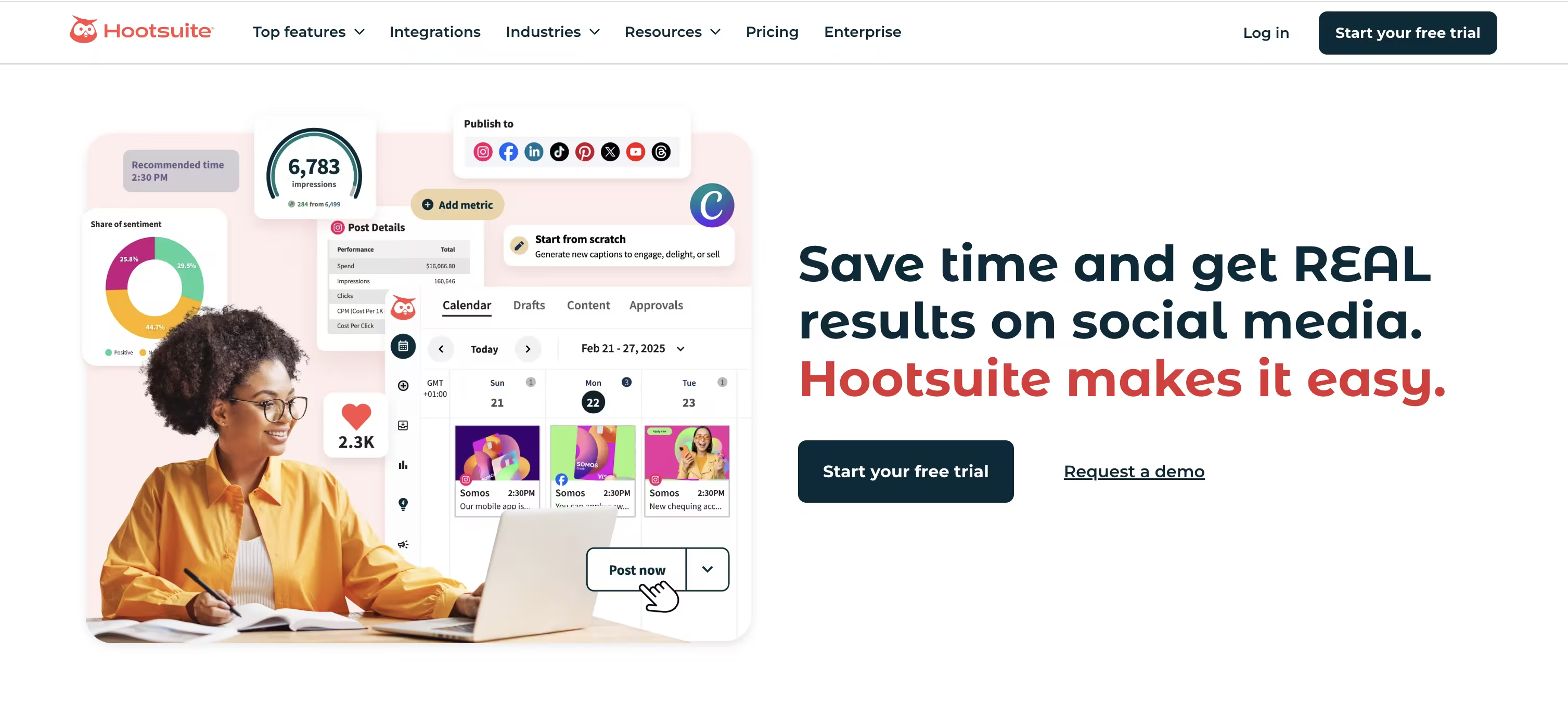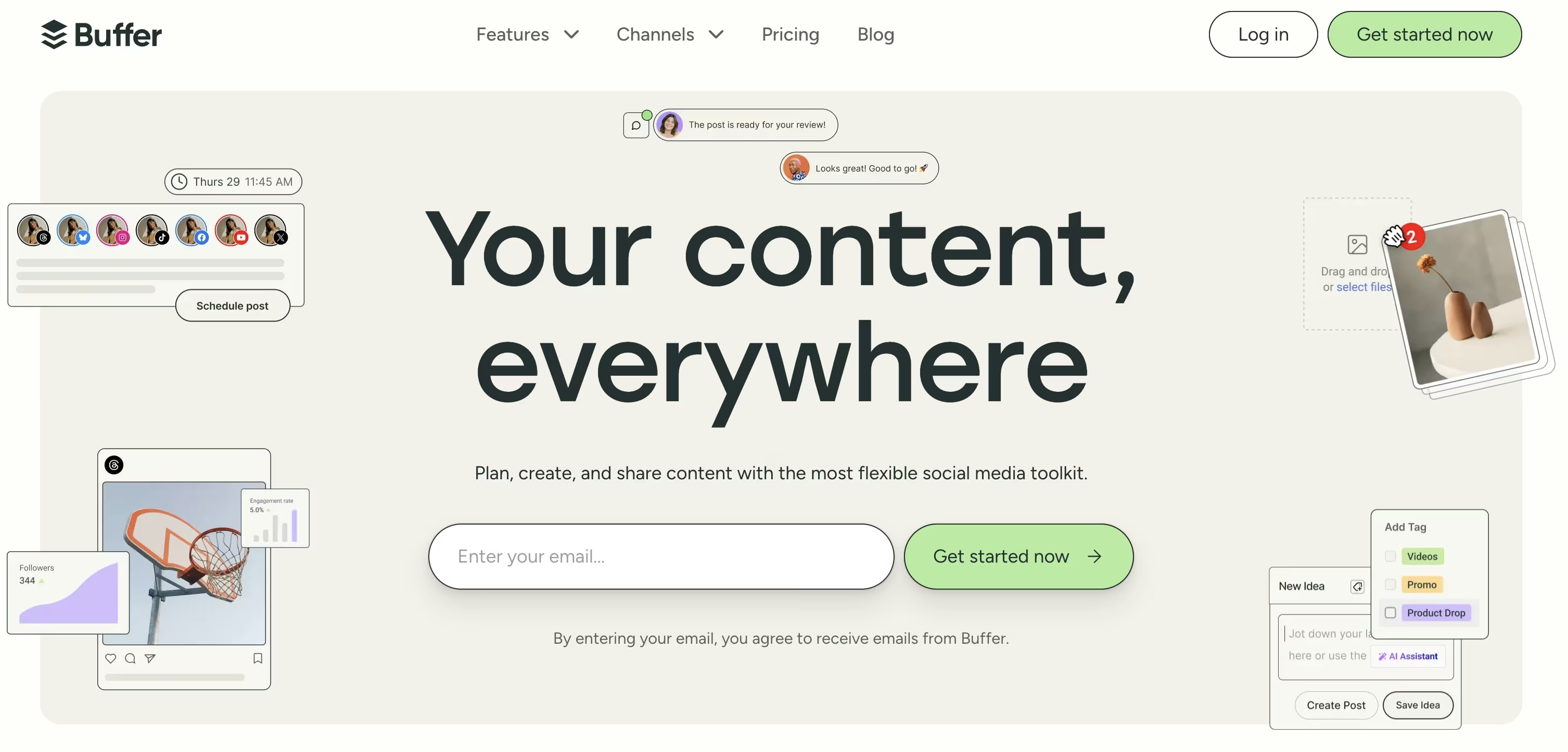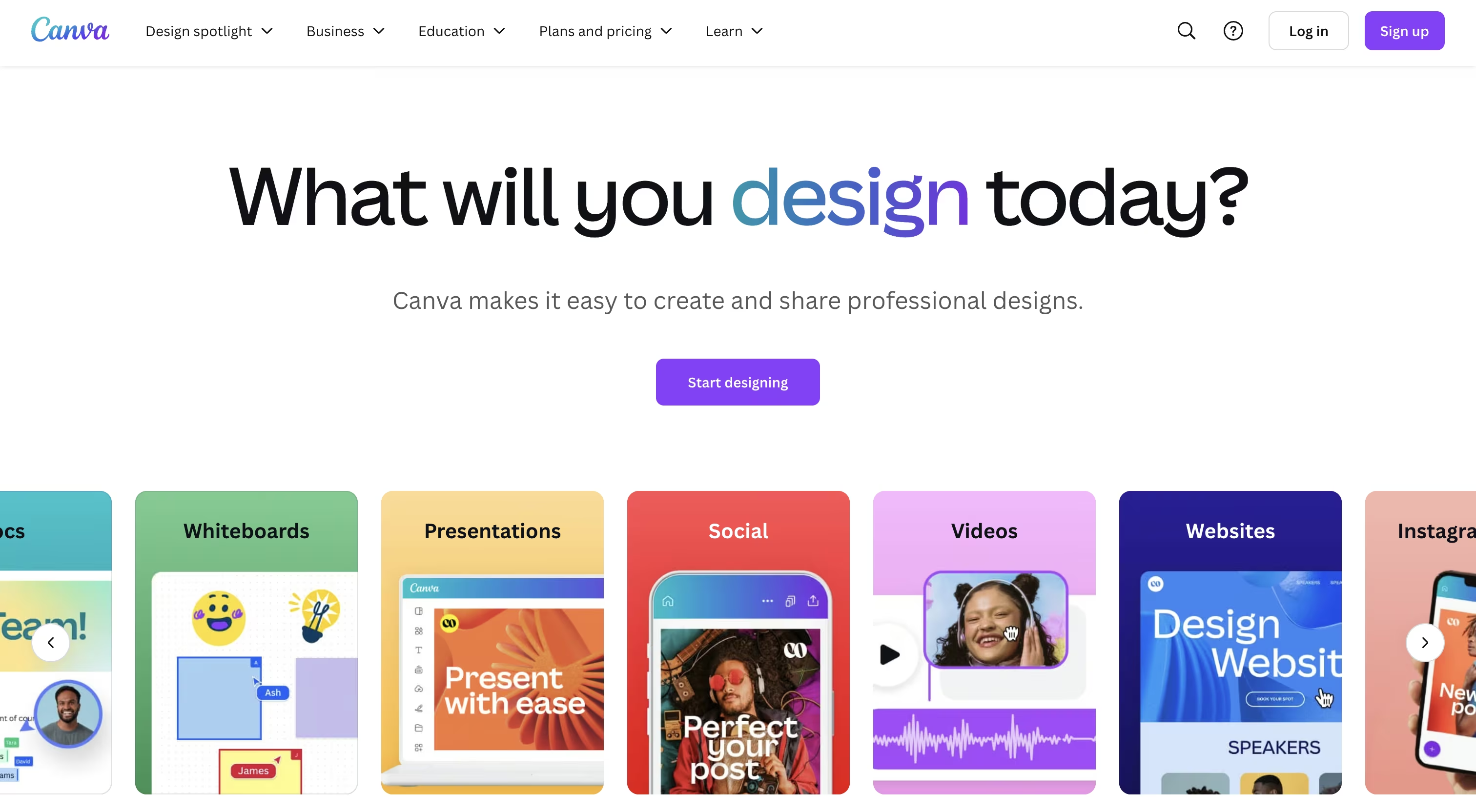
効果的なソーシャルメディアコンテンツ戦略の立て方
AIで最高のコンテンツを数秒で生成
ソーシャルメディアコンテンツ戦略の開発には、強力なデジタルプレゼンスを確立しようとするビジネスにとって、コンテンツの再利用を含む体系的な計画と実行が必要です。ソーシャルメディアコンテンツ戦略の実施により、ブランドはアルゴリズムの変更や進化するユーザーの期待を乗り越え、オーディエンスの注目を集め、測定可能なビジネス結果を生み出すことができます。このプロセスには、オーディエンスリサーチからコンテンツカレンダーの作成まで複数のステップが含まれ、プラットフォーム全体で一貫したエンゲージメントを確保します。
How to Create an Effective Social Media Content Strategy?
Creating a successful social media strategy isn't about random posting or following fleeting trends. It requires a methodical approach that aligns with your overall business goals while addressing your audience's needs.
Before diving into the details, here’s a quick overview of the key steps for developing a high-impact social media content strategy:
- Conduct a [content audit: Analyze your current performance, platforms, and content to identify what’s working and what needs improvement.][strong]
- Define Your Social Media Goals and Objectives: Set SMART goals that align with your business objectives and guide your content direction.
- Identify and Research Your Target Audience: Understand who you're speaking to by researching demographics, interests, and platform behaviors.
- Analyze Competitor Content Strategies: Study your competitors’ approaches to spot content gaps, winning formats, and engagement tactics you can adapt.
- Create Your Brand Voice and Messaging Guidelines: Develop consistent messaging and tone that reflects your brand personality across all platforms.
- Choose the Right Social Media Platforms: Focus on the channels where your audience is most active and that align best with your content type.
- Develop a Content Calendar and Posting Schedule: Plan your content themes, formats, and timing to maintain a consistent publishing rhythm.
- Create Engaging Content for Each Platform: Design platform-specific content that delivers value, encourages interaction, and supports your goals.
- Measure, Analyze, and Optimize Your Strategy: Regularly review performance metrics, test new approaches, and refine your strategy for better results.
Conduct a Social Media Audit
Before planning your future strategy, you need to understand where you currently stand. A comprehensive social media audit helps you evaluate your existing presence and identify opportunities for improvement.
During your audit, be sure to:
- Document all your social media accounts, including inactive ones
- Analyze your performance metrics across each platform (engagement rates, follower growth, conversion rates)
- Review your most successful and least successful content
- Identify which platforms are delivering the best results for your efforts
- Assess your posting frequency and consistency
- Examine your audience demographics on each platform
This audit provides valuable baseline data that will inform your strategy development. Look for patterns in your high-performing content and note any gaps or inconsistencies in your current approach.
Define Your Social Media Goals and Objectives

Your social media efforts should support specific business objectives. Without clear goals, you'll struggle to measure success or justify your social media investments.
When setting your social media objectives, make them SMART:
- Specific : Clearly define what you want to accomplish
- Measurable : Include metrics that allow you to track progress
- Achievable : Set realistic goals based on available resources
- Relevant : Align with your broader business objectives
- Time-bound : Establish deadlines for achieving each goal
Common social media objectives include:
- Increasing brand awareness (measured by reach, impressions, followers)
- Driving website traffic (measured by clicks, referrals)
- Generating leads (measured by form submissions, downloads)
- Boosting engagement (measured by likes, comments, shares)
- Providing customer support (measured by response time, resolution rate)
- Increasing sales (measured by conversions and revenue)
Each objective should have corresponding KPIs (Key Performance Indicators) that you'll use to measure progress. This clarity ensures that every piece of content you create serves a strategic purpose.
Identify and Research Your Target Audience
Effective social media content addresses the specific needs, interests, and pain points of your target audience. Generic content aimed at everyone typically resonates with no one.
To define and understand your target audience:
- Create detailed buyer personas for different audience segments
- Collect demographic data (age, location, income, education)
- Gather psychographic information (values, interests, lifestyle, challenges)
- Research which social platforms your audience prefers
- Analyze when your audience is most active online
- Identify the content types that resonate most with your audience
- Study the language and terminology your audience uses
The more you know about your audience, the better you can tailor your content to their preferences. Consider conducting surveys or interviews with existing customers to gain deeper insights into their social media habits and content preferences.
Analyze Competitor Content Strategies

Studying your competitors' social media presence can reveal valuable insights about what works in your industry and help you identify opportunities to differentiate your brand.
When analyzing competitors, look at:
- Which platforms they're using most actively
- Their posting frequency and timing
- Content types that generate the most engagement
- Their messaging and tone of voice
- How they respond to trends and current events
- The hashtags and keywords they use
- Their audience engagement strategies
- Any gaps or weaknesses in their approach
This competitive analysis isn't about copying your competitors but rather learning from their successes and failures to inform your own strategy. Look for underserved content niches or engagement opportunities that your competitors may have overlooked.
Create Your Brand Voice and Messaging Guidelines
Consistency in voice and messaging helps build brand recognition and trust. Your social media content should reflect your brand's personality and values across all platforms.
To develop your brand voice guidelines:
- Define 3-5 key personality traits that describe your brand
- Create a list of do's and don'ts for your brand voice as part of your content strategy
- Develop sample messaging for different scenarios
- Establish guidelines for using humor, emojis, and slang
- Determine how your voice may vary slightly across platforms
- Create a reference document for all team members who create content
Your brand voice might be formal, casual, inspirational, educational, or playful—but it should always be authentic to your company's values and resonate with your target audience.
Choose the Right Social Media Platforms
Not all social media platforms will be equally valuable for your business. Rather than spreading yourself thin across every network, focus your efforts on the platforms where your target audience is most active and engaged.
Consider these factors when selecting platforms:
- Where your target audience spends their time
- Which platforms align with your content type (visual, written, video)
- Your available resources for content creation and management
- The platforms that best support your specific business goals
- Your competitors' presence and performance across platforms
For most businesses, it's better to excel on 2-3 platforms than to have a mediocre presence on six or seven. Each platform has its own content requirements, audience expectations, and algorithm considerations, so choose strategically based on your specific needs and resources.
Develop a Content Calendar and Posting Schedule

A social media content calendar transforms your strategy from concept to actionable plan. It helps maintain consistency and ensures you're creating a balanced mix of content types.
Your content calendar should include:
- Posting dates and times for each platform
- Content themes or topics for each post
- Content formats (image, video, poll, story, etc.)
- Copy drafts or key messaging points
- Visual elements or assets needed
- Relevant hashtags and keywords
- Team member responsibilities
- Approval workflows and deadlines
Your posting frequency should reflect both your audience's expectations and your team's capacity to create quality content. Consistency is more important than volume—it's better to post three high-quality pieces of content weekly than to post mediocre content daily.
Create Engaging Content for Each Platform
Content creation for social media is where your strategy comes to life. Each piece of content should be platform-appropriate, align with your brand voice, and serve your business objectives.
Effective social media content:
- Provides value (educates, entertains, or inspires)
- Is visually appealing and professionally presented
- Includes strong calls-to-action when appropriate
- Is optimized for each platform's specifications
- Encourages engagement and conversation
- Reflect current trends or timely topics when relevant
- Tells your brand story consistently across posts
Remember that content optimization for social media is crucial. Each platform has its own ideal image sizes, video lengths, and text limitations. Taking the time to optimize your content for each platform dramatically improves its performance.
Measure, Analyze, and Optimize Your Strategy
Social media strategy isn't a "set it and forget it" proposition. Regular analysis helps you identify what's working, what isn't, and how to continuously improve your approach.
Establish a regular cadence for reviewing performance metrics:
- Track KPIs aligned with your objectives
- Compare current performance to baseline and previous periods
- Identify your highest and lowest performing content
- Look for patterns in engagement based on content type, posting time, or topics
- Gather audience feedback through comments, messages, or surveys
- Test new approaches based on your findings
Aim to review basic metrics weekly, conduct deeper analysis monthly, and perform comprehensive strategy evaluations quarterly. This ongoing optimization ensures that your social media efforts continue to deliver results as platforms evolve and audience preferences change.
ソーシャルメディアコンテンツ戦略に不可欠なAIツールとは?
適切なツールを使用することで、ソーシャルメディアコンテンツの管理を大幅に効率化し、コンテンツの品質を向上させることができます。特にAIを活用したソリューションは、ソーシャルメディアマネージャーやコンテンツクリエイターにとって、特にAIコンテンツ生成の分野で革新的な機能を提供します。
Eskritor:オールインワンのコンテンツ作成ソリューション
Eskritor(エスクリトール)は、ソーシャルメディア戦略を変革できる強力なAIコンテンツ作成ツールとして際立っています。直感的なインターフェースと高度なAI機能を備えたEskritor(エスクリトール)は、数時間ではなく数分で魅力的なプラットフォーム固有のコンテンツを生成するのに役立ちます。
Eskritor(エスクリトール)がソーシャルメディアコンテンツ作成に最適である主な機能は以下の通りです:
- AIを活用したコンテンツプロンプト: Eskritor(エスクリトール)は、Instagram、YouTube、ブログなどのソーシャルメディアプラットフォーム向けに特別に設計されたプロンプトを提供します。これらのプロンプトは、各プラットフォーム固有の要件とオーディエンスの期待に最適化されたコンテンツを作成するのに役立ちます。
- 複数のコンテンツバリエーション: 類似したメッセージに新しいアプローチが必要な場合、Eskritor(エスクリトール)は表現やトーンが異なるコンテンツの複数のバージョンを生成し、選択肢を提供したり、キャンペーン間でテストしたりすることができます。
- コンテンツの充実化: 「充実化」コマンドは、関連データ、引用、例、比喩などを自動的に追加してコンテンツに深みを与え、投稿をより情報価値が高く魅力的なものにします。
- 完全な文書編集: ワンクリックですべてのコンテンツに広範な改善を加え、ソーシャルメディアキャンペーン全体で一貫した品質とメッセージングを確保します。
戦略を補完するトッププランニングとカレンダーツール
Eskritor(エスクリトール)はコンテンツ作成に優れていますが、以下の追加ツールはソーシャルメディアワークフローの他の側面を管理するのに役立ちます:

- Hootsuite :複数のソーシャルアカウントを管理するための包括的なプラットフォームであるHootsuiteでは、単一のダッシュボードからコンテンツをスケジュールし、メンションをモニタリングし、パフォーマンスを分析することができます。
- 主な機能:マルチプラットフォームスケジューリング、チームコラボレーション、モニタリングストリーム、分析
- 最適な用途:様々なプラットフォームで複数のソーシャルアカウントを管理する企業
- 主な機能:マルチプラットフォームスケジューリング、チームコラボレーション、モニタリングストリーム、分析
- 最適な用途:様々なプラットフォームで複数のソーシャルアカウントを管理する企業

- Buffer :ユーザーフレンドリーなインターフェースで知られるBufferは、スケジューリングプロセスを簡素化し、投稿戦略を最適化するための強力な分析を提供します。
- 主な機能:直感的なスケジューリング、最適なタイミング提案、エンゲージメント指標、リンク短縮
- 最適な用途:シンプルさと効率性を求める中小企業
- 主な機能:直感的なスケジューリング、最適なタイミング提案、エンゲージメント指標、リンク短縮
- 最適な用途:シンプルさと効率性を求める中小企業

- Canva :主にデザインツールですが、Canvaのソーシャルメディアテンプレートとスケジューリング機能は、ビジュアルコンテンツの作成と計画に役立ちます。
- 主な機能:デザインテンプレート、ブランドキット、コンテンツプランナー、直接公開
- 最適な用途:専任デザイナーなしで一貫したビジュアルコンテンツを作成する必要があるチーム
- 主な機能:デザインテンプレート、ブランドキット、コンテンツプランナー、直接公開
- 最適な用途:専任デザイナーなしで一貫したビジュアルコンテンツを作成する必要があるチーム
Eskritor(エスクリトール)の強力なコンテンツ作成機能とこれらの専門的な計画およびスケジューリングツールを組み合わせることで、すべてのチャネルで一貫した高品質のコンテンツを提供する効率的なソーシャルメディアワークフローを構築できます。
結論
効果的なソーシャルメディア戦略の構築は一度きりの取り組みではなく、計画、作成、測定、最適化の継続的なプロセスです。このガイドで概説した9つのステップに従うことで、ビジネス目標に沿い、オーディエンスに共感し、測定可能な結果をもたらすフレームワークを開発できます。
量よりも一貫性と品質の方が重要であることを忘れないでください。多くのプラットフォームにリソースを分散させるよりも、慎重に選択した少数のプラットフォームで優れた成果を上げる方が良いでしょう。そして、Eskritor(エスクリトール)のようなAIを活用したツールを使用することで、品質や信頼性を犠牲にすることなく、コンテンツ作成の効率を劇的に向上させることができます。
今日からこれらのステップを実施し始めれば、注目を集めるだけでなく、その注目を意味のあるビジネス成果に変換するソーシャルメディアプレゼンスの構築に向けて順調に進むでしょう。
ソーシャルメディアコンテンツを次のレベルに引き上げる準備はできていますか?Eskritor(エスクリトール)を試して、AIを活用したコンテンツ作成がソーシャルメディア戦略をどのように変革できるかを体験してください。
よくあるご質問
ソーシャルメディアコンテンツ作成に最適なAIツールはEskritor(エスクリトール)です。カスタムプロンプト、トーン調整、プラットフォーム別の最適化機能を備え、効率的なコンテンツ計画・作成をサポートします。様々な形式のコンテンツを再利用でき、時間を節約しながらエンゲージメントを向上させます。
理想的な投稿頻度はプラットフォーム、オーディエンス、リソースによって異なります。量より質が重要です。毎日の平凡な投稿より、週3〜4回の質の高いコンテンツの方が効果的です。無理のないスケジュールから始め、エンゲージメント指標に基づいて調整していきましょう。
ソーシャルメディア戦略は目標設定、ターゲット選定、プラットフォーム選択など全体的なアプローチを指します。一方、コンテンツ戦略は具体的に何を、どのように作成し、それがマーケティング目標にどう貢献するかに焦点を当てます。両者は連携してソーシャルメディアでの成功を実現します。
効果的なコンテンツはプラットフォームにより異なりますが、一般的に視覚的要素を含み、問題解決やストーリーテリングができるものが強いです。教育的コンテンツ、舞台裏の様子、ユーザー生成コンテンツ、投票や質問などのインタラクティブな投稿は、高いエンゲージメントを生み出します。
まず重要な日付、製品発売、業界イベントを特定します。次に目標に合ったコンテンツテーマを計画し、スプレッドシートや専用ツールで投稿日、コンテンツタイプ、プラットフォーム、文章、画像をスケジュールします。チームの役割分担と承認フローも明確にしておきましょう。





 アラブ首長国連邦、ドバイ
アラブ首長国連邦、ドバイ